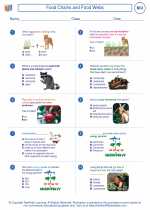Tornadoes
A tornado is a rapidly rotating column of air that is in contact with both the surface of the Earth and a cumulonimbus cloud or, in rare cases, the base of a cumulus cloud. They are often referred to as twisters or cyclones, although the word cyclone is used in meteorology to refer to a weather system, not a tornado. Tornadoes come in many shapes and sizes, but are typically in the form of a visible condensation funnel, whose narrow end touches the Earth and is often encircled by a cloud of debris and dust.
Formation of Tornadoes
Tornadoes are typically formed from powerful thunderstorms, when warm, moist air collides with cold, dry air. This creates instability in the atmosphere, leading to the development of a rotating updraft within the storm. The rotating updraft, or mesocyclone, can then intensify and create a tornado under the right conditions.
Study Guide
Here are some key points to consider when studying tornadoes:
- Understand the atmospheric conditions that lead to the formation of tornadoes, including the role of warm, moist air and cold, dry air.
- Learn about the various scales used to measure tornado intensity and damage, such as the Enhanced Fujita Scale (EF-Scale).
- Explore the safety measures and warning systems in place to help mitigate the impact of tornadoes on communities.
- Investigate the impact of tornadoes on the environment, infrastructure, and human populations.
- Examine the ongoing research and advancements in tornado prediction and tracking technology.
By understanding these key points, you can develop a comprehensive understanding of tornadoes and their impact on the world around us.
.◂Biology Worksheets and Study Guides High School. Food Chains and Food Webs

 Worksheet/Answer key
Worksheet/Answer key
 Worksheet/Answer key
Worksheet/Answer key
 Vocabulary/Answer key
Vocabulary/Answer key
 Vocabulary/Answer key
Vocabulary/Answer key
